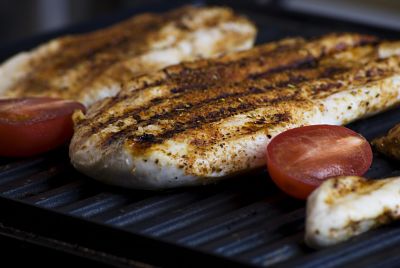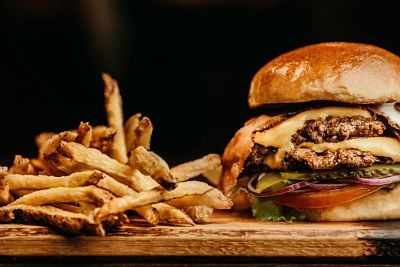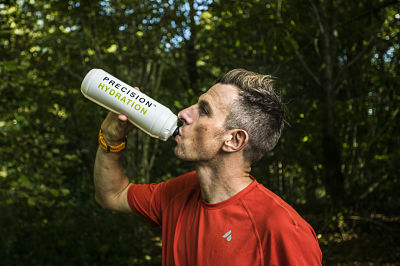You know that feeling when you come in from a long training session and you’re ready to eat EVERYTHING in the refrigerator? That’s your body screaming at you to let you know that it needs refuelling and rebuilding after what you’ve just put it through.
When you feel like you’ve earned it, it can be tempting to annihilate every piece of food you see before you. But, what you eat (and to some extent when you eat it) can have a significant influence on just how fast and effectively you recover.
Post-exercise recovery nutrition may or may not be something you pay close attention to. Maybe it’s an integral part of your training routine or maybe you scoff down whatevers closest to you at the time. Or maybe, it just depends on the day.
Either way, the purpose of your intake post-exercise should be to Refuel, Rebuild and Rehydrate - also known as ‘The Three R’s of recovery nutrition’. In other words, it means focusing on carbohydrates (refuel), protein (rebuild) and fluids/electrolytes (rehydrate).
Refuel - How to optimise your carb intake
Exercise depletes our energy stored as glycogen in the muscles and liver. Exact quantities of stored glycogen vary with body size but we store approximately 350g of glycogen in the muscles and a smaller, but still significant, 80-100g in the liver.
When glycogen stores have been depleted through high-intensity or prolonged exercise (1.5-2 hours), the primary goal of recovery nutrition is to replenish these stores by consuming carbohydrates in the post-exercise period.
In very simplistic terms, the body breaks carbohydrates down into glucose (a type of sugar). If the body doesn’t need this glucose for energy in the immediate term, it stores it as glycogen in the liver and muscles.
This provision of carbohydrates stops the body from looking for energy elsewhere (e.g. the muscle).
The rate of carbohydrate ingestion which optimises recovery and maximises the rate of glycogen resynthesis has been pinpointed to plateau at ~1.0-1.1 gram per kilogram of body mass per hour (g/kg/h).
Knowing that is all well and good but what does that actually look like on your plate?

Here’s a few examples: (N.B. for an individual weighing 65-70 kilograms)
- Two crumpets (2 x 20g) with jam (2 x 10g per tsp) and a medium-sized apple or small banana (15g) = ~75 grams of carbs
- Two slices of brown bread (2 x 15g) and a can of Heinz baked beans (39g) = ~70g of carbs
- 300 grams of yogurt (not a low-sugar option - 30g) with raspberries (1 cup - 10g), strawberries (small punnet - 10g) and 1 tsp of honey (10g) = ~60g of carbs
- 50 grams of granola (30-40g - varies on brand), 1 tsp of honey (10g) and 250ml of milk (15g) = ~60-70g of carbs
Bear in mind that matching your carb intake to your activity level is important. On hard, heavy training days, a higher intake of carbohydrates is warranted, whereas a lower amount might be better on lighter, easier training days.
Rebuild - How to optimise your protein intake
Including some protein in your post-exercise meal helps repair exercise-induced damage to tissues, like muscle, and may help accelerate the uptake of carbohydrates.
For most people, supplementation (i.e. protein shakes, powders) is not needed. Adequate recovery can be achieved without consuming super high amounts of protein, but some is definitely helpful.
Protein is made up of long chains of amino acids (the ‘building blocks’) that aid rebuilding. In total, there are 20 amino acids, of which nine are ‘essential’ (the body can’t make them) so we must get them from our diet. Consuming an adequate amount of protein post-exercise provides the body with the amino acids necessary to rebuild muscle and maintain a positive protein synthesis/breakdown balance.
Research which has looked specifically at the post-exercise period has shown that around 20 grams of protein maximises results. The one caveat of this was athletes with higher levels of muscle mass who might benefit from an intake of up to 40 grams.

What does this look like?
- 100g chicken breast (grilled) = ~32g
- Canned (85g) tuna in brine = ~25g
- Two medium eggs = ~14g
- 100g of nuts (almonds, walnuts, hazelnuts) = ~25g (varies depending on the type of nut)
When making food choices, remember that protein can come from many different sources and mixing up your protein intake with some high- and low-fat sources can help to hit high and low calorie days depending on your demand.
Timings - When should you consume your recovery nutrition?
The timing of post-exercise feeding is a hot topic. Often referred to as the ‘anabolic window’, research has shown that the body is more responsive to refuelling and repairing in the immediate period after exercise.
This concept for carbohydrates was first introduced in the 1980s by Sports Scientist, John Ivy. His research team saw a significant increase in the rate of glycogen storage when carbohydrates were fed immediately after exercise compared to a two hour delay.
This finding sparked the idea that athletes could capitalize on their recovery if they took advantage of this early window of opportunity.
The whole story isn’t quite as exciting though. Mainly because the maximal glycogen storage between feeding strategies showed no difference at eight hours post-exercise - only the initial rate (<4 hours) of replenishment was faster with immediate feeding.
In practice this means that only an athlete looking to train or compete within that first eight-hour post-exercise period would benefit from rapid feeding. For most of us who ‘only’ train once a day, we can afford for our post-exercise feeding to be a lot more relaxed. Come the next day, our glycogen stores will have readjusted to the same level again and should be good to go.
As a person who doesn’t often feel hungry after exercise, this is good news for me.
If you’re an athlete who does train twice a day or competes in a sport which consists of heats, semi-finals and finals, then immediate feeding will give you more ‘bang for your buck’ in that initial four-hour period and would be worthwhile.
Under these circumstances, opting for carbohydrates with a high glycemic index (GI) is advantageous. High GI carbohydrates are foods which are broken down rapidly and affect your blood sugar levels quickly. Examples might include white bread, cakes and other sweet treats, fruit juices and most breakfast cereals.
It might also mean fast food. An interesting study investigated the differences upon glycogen replenishment and exercise performance when athletes recovered with the same macronutrient (carb, fat and protein) profile but compared marketed specialised sports supplements versus fast food.

After four hours of recovery, both strategies initiated the same glycogen restoration and time trial performance showed no differences.
Of course, there’s plenty of other reasons for why you shouldn’t be gorging on fast food after every hard session but for rapid glycogen replenishment it seems it really is just as good.
Sucrose may be a particularly valuable carb source. Composed of fructose and glucose, sucrose is able to effectively restore both the muscle and liver glycogen levels.
In contrast, foods high in fructose alone are less effective (almost 50% less in fact).
This is because muscle doesn’t contain fructokinase - an enzyme necessary for the sugar’s metabolism - so it must first be broken down by the liver, thus slowing the replenishment rate of muscle glycogen stores.
When it comes to protein ingestion and optimal timing, the theme continues.
The same 30-45 minute window of opportunity has been touted. But, the more we learn, there’s less relevance around this time frame. Whether protein is consumed before, during or in the 3-4 hours after exercise, it doesn’t seem to make much difference to protein synthesis rates in the body. It’s the act of consuming adequate protein that has an effect, not so much the timing.
With this in mind, spreading your intake of protein out across the day (2-3 servings a day) can be beneficial (particularly as we age). This is because:
- It helps maintain that positive protein breakdown/synthesis balance mentioned above
- It also slows digestion, helping maintain energy levels, and provides a greater satiating effect
Rehydration - Optimising your fluid and electrolyte intake
Alongside the two R’s already mentioned - Refuel and Repair - we also have Rehydrate.
We typically sweat when we exercise, which can lead to dehydration. So, replenishing sufficient fluids and electrolytes helps the body return to fluid balance.
In addition, many recovery modalities - compression garments and massage to name two - focus on increasing blood flow to the muscles. If recovery hinges on adequate blood flow then dehydration-induced blood-volume loss places you on the backfoot and potentially impairs the speed of recovery.

Andy and I have covered the third ‘R’ before:
- How to rehydrate quickly to improve recovery
- Science of recovery: The importance of food, hydration and sleep
What do the ‘Three R’s’ mean for your recovery routine?
The aggressiveness of a recovery nutrition strategy will depend on when the athlete or player is expected to compete or train again. As a general rule, the shorter the recovery time, the more important the timing and composition of post-exercise nutrition is (~1g carb per kg bodyweight + 20g protein is a standard recommendation).
Rapid post-exercise feeding needn’t be a blanket recommendation though (like it so often is). It’s less an anabolic window and more an anabolic barn-door (less catchy…but the point is it’s hard to miss).
When recovery times are longer than a few hours, then the type, form, and timing of consumption becomes less important than the total intake.
Our bodies are pretty good at ‘making do’ and, as long as it’s given enough, then it takes what it’s given and turns it into what it needs - it’s not really one for pickiness.
So, when you’re next raiding the fridge immediately after a training session, do it because you want to, not because you feel you have to. And do it with The Three R’s in mind.
For anyone interested in delving even deeper into this topic area, check out this great, free-access resource: ‘International Society of Sports Nutrition position stand: Nutrient timing’.
